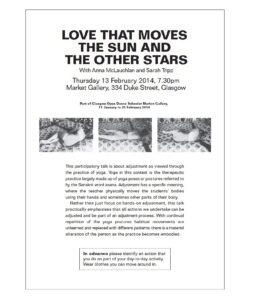“It’s a bit of the very last verse from Paradiso – Dante’s Paradise. ‘My will and my desire were turned by love, the love that moves the sun and the other stars.’ Dante was trying to explain faith, I think, as an overpowering love, and maybe it’s blasphemous, but that’s how I think of the way that I love you. You came into my life and suddenly I had one truth to hold on to- that I loved you, and you loved me.’ – City of Fallen Angels” —”Jace Herondale Quotes,” Jace and Clary, (retrieved on Mar 23, 2023)
“Love that moves the sun and other stars,” Martin Hoegger
“In the last verse of The Divine Comedy, Dante defines God as « l’amor che move il sole e l’altre stelle« , the love that moves the sun and the other stars (Paradise, xxxiii, 145). This means that the stars, the planets, the whole universe are not governed by a blind force, but by a personal will, the Spirit of God, who in Christ revealed himself as Love. This love is the golden thread that links all parts of creation together.” —Martin Hoegger, “Love that moves the sun and other stars,” Martin Hoegger, Dec 30, 2019 (retrieved March 26, 2024)
Love, Watercolor by Sir Edward Coley Burne-Jones (1880s)
“This watercolour is inscribed with a line from the Commedia (The Divine Comedy) by the Italian poet Dante Alighieri (1265-1321): ‘L’amor che muove il sole e l’altre stelle’ (The love that moves the sun and other stars’). It is a highly finished design for a large needlework panel, but now it is considered to be a great watercolour in its own right. Burne-Jones (1833-1898) made several such designs, some of which were worked up into tapestry or needlework by the young Frances Graham, with whom Burne-Jones later fell in love.
[. . .]
“At the time of this painting, Burne-Jones was also working on his famous King Cophetua and the Beggar-maid. The model for the beggar-maid was Frances Graham, and Burne-Jones had fallen in love with her. In 1883, to his great dismay, she announced her impending marriage, and he painted in anenomes – the symbol of rejected love and death – around the figure of the beggar-maid. Here too, in Love, the colours of anemones predominate, rich scarlets and purples against cobalt and turquoise. Just as Dante lost his beloved Beatrice, and Rossetti his Lizzie, so Burne-Jones, on more than one occasion, lost his heart to those like Frances who were unable to return his love.” —Sir Edward Coley Burne-Jones, Love, Victoria & Albert Museum Collections, 1880s (retrieved March 26, 2024)
“Love that moves the sun and the other stars,” a Market Gallery Night School Programme
“This participatory talk is about adjustment as viewed through the practice of yoga. Yoga in this context is the therapeutic practice largely made up of yoga poses or postures referred to by the Sanskrit word asana. Adjustment has a specific meaning, where the teacher physically moves the students’ bodies using their hands and sometimes other parts of their body. Rather than just focus on hands-on adjustment, this talk practically emphasises that all actions we undertake can be adjusted and be part of an adjustment process. With continual repetition of the yoga postures habitual movements are unlearned and replaced with different patterns: there is a material alteration of the person as the practice becomes embodied.” —Anna McLauchlan & Sarah Tripp, “Love that moves the sun and the other stars,” Market, February 13, 2014 (retrieved March 20, 2024)
“L’amor che move il sole e l’altre stelle” Twill Silk Scarf
Etsy user @SinontheBeach features a handmade twill silk scarf referencing the iconic final line of Dante’s Paradiso, “‘l’amor che move il sole e l’altre stelle”. —SinontheBeach,”twill Silk scarf with our own beautiful print ‘l’amor che move il sole e l’altre stelle,'” Etsy, (retrieved on March 20, 2024)
- « Previous Page
- 1
- 2
- 3
- 4
- …
- 7
- Next Page »





